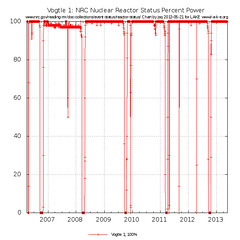How many of the distribution centers here have solar panels on top?
Or schools?
Or government buildings?
Or businesses?
None.
But sunny far-north-next-to-Canada Buffalo has them.
 David Robinson wrote for Buffalo News 14 May 2013,
FedEx groundbreaking gives region bragging rights:
FedEx Trade Networks breaks ground on a new distribution center that development officials hope will lure more companies, jobs
David Robinson wrote for Buffalo News 14 May 2013,
FedEx groundbreaking gives region bragging rights:
FedEx Trade Networks breaks ground on a new distribution center that development officials hope will lure more companies, jobs
FedEx Trade Networks began construction Tuesday on its new
distribution center in the Town of Tonawanda, giving hope to local
development officials that the company’s expansion will boost the
Buffalo Niagara region’s efforts to become a distribution and
logistics hub.
“It really drives home the value of this region as a center
for logistics in the global economy,” said Kenneth Adams,
president and chief executive officer of Empire State Development,
the state’s main economic development agency.
“It plays to the inherent strength of the region,” Adams
said. “There could be no better seal of approval for a
logistics business in this location.”
We’ve got transportation and logistics and distribution centers here,
but we don’t have this:
Fred Schardt, president of FedEx Trade Networks, said the
environmental benefits of the company’s 14-acre site within the
Riverview Solar Technology Park off River Road also were a selling
point. “We understand the importance of doing business in an
environmentally sustainable way. It’s very, very important for
us,” he said. “This park allows this to happen.”
The FedEx building will include a 100-kilowatt solar array that will
be integrated into the design of the structure. Those solar panels
are expected to generate 1 million kilowatt-hours of electricity
during the term of the company’s lease, reducing the company’s
consumption of fossil fuels by the equivalent of 80,000 gallons of
gasoline, Montante said.
If Buffalo, a thousand miles to the north with much less sun,
can do this, we can, too.
Maybe if we did this, maybe in some of VLCIA’s industrial parks,
maybe it would attract more businesses….
-jsq
 This item is on the
May 7th and
May 21st 2013 agendas for the Effingham County Commission:
This item is on the
May 7th and
May 21st 2013 agendas for the Effingham County Commission:












